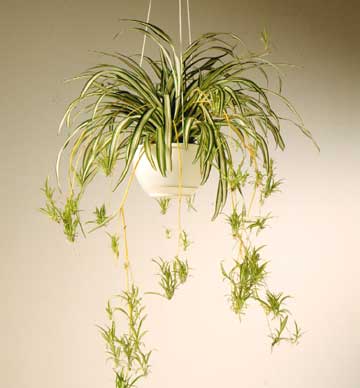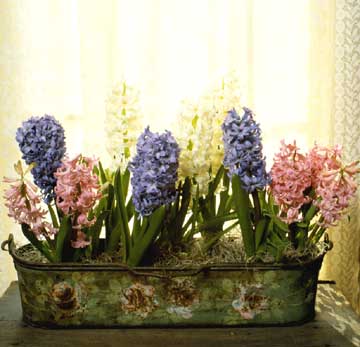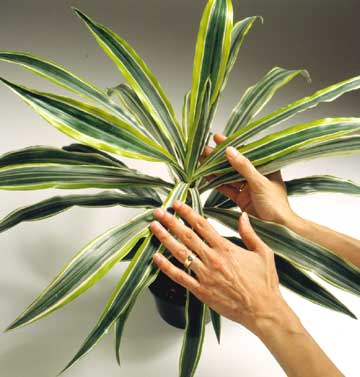





 Spider Plant
Spider Plant
Foliage plants are the backbone of most houseplant collections. In full form year-round, they provide varied shades of green, a rich variety of textures, and shapes from massive to minute. Plants can be found to match the conditions in most any spot, from a bright corner by a window to a dim nook in a bathroom. How you choose to display the plants is up to you, but all can be made to match interior design and decor tastefully.
Flowering plants add bright splashes of color and exquisite scents. Some are difficult to raise indoors and are seasonal gift plants. Others are not quite so temperamental and will bloom year after year. The secret is to match your and your plants' needs so that you both get what you want: healthy plants that provide stunning color and delicate scent for as long as possible.
continue reading below Hyacinth
Hyacinth
Buy from reputable stores where you know plants receive proper care. If the plant in a store looks healthy, you can feel reasonably confident that the plants you buy there will be vigorous and long-lived.
You may have to order more unusual plants through catalogs. Plant societies often are an overlooked source of unusual plants or unusual varieties of more common plants. Most garden magazines also have sections with sources for rare or exotic plants.
Buy from companies that offer money-back guarantees. If you receive damaged, dry, or diseased plants from a mail-order company, return them at once for a full refund. Ordering plants through the mail always is risky since plants can be damaged in transit by temperatures too high or too low. Most companies, however, stand behind their plants and replace them if necessary.
Many indoor gardeners start rare and unusual plants from seeds ordered through mail-order companies. Starting plants from seed is one of the most rewarding aspects of indoor gardening, one that saves you lots of money while giving tremendous satisfaction. Companies often send detailed growing instructions with the seeds. If you can't find a seed in a catalog try one of the seed exchanges now included in many garden magazines as a service to readers. You might try starting plants, too, from cuttings off friends' plants.
Examine plants carefully before buying. Foliage plants should be lush and full, and have good color. Stems and leaves should be firm, not wilted or distorted, and roughly equal on all sides. New growth should be evident. The foliage should be natural, not covered with a thin film of polish or wax.
 Check plants carefully before
buying them.
Check plants carefully before
buying them.
Copyright © www.100flowers.win Botanic Garden All Rights Reserved